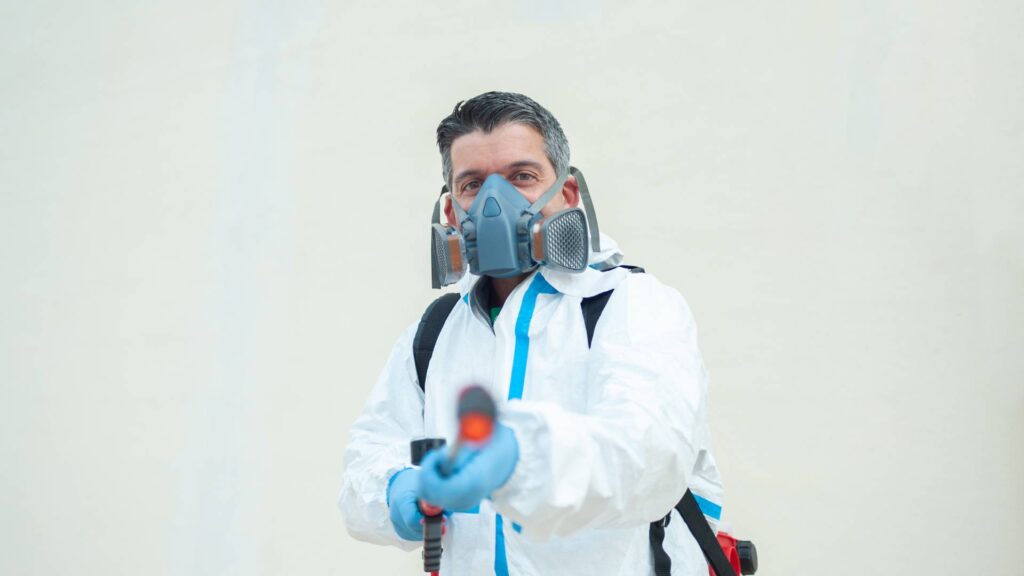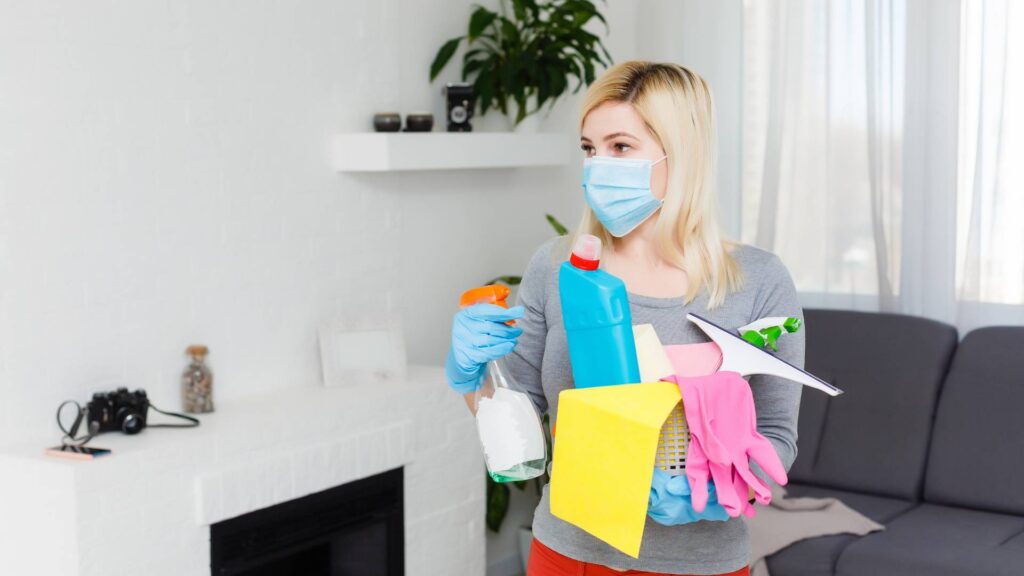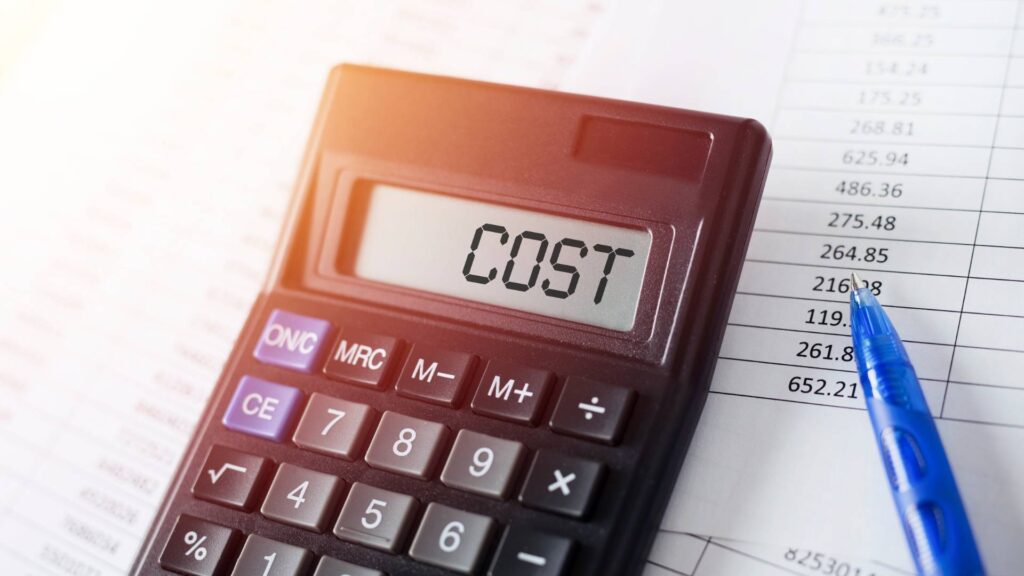As a pest control expert with years of experience under my belt, I understand that fumigation is more than just a service—it’s about protecting your home and ensuring a healthy environment for your family. Fumigation is a pest control method that plays a crucial role in maintaining a pest-free living space.
The cost of home fumigation varies widely, and I’m here to guide you through the factors that influence these costs, ensuring you make an informed decision when choosing a pest control service. Understanding how much does fumigation cost is essential to safeguarding your home and health.
Understanding Fumigation Cost Factors and Pricing Models
Fumigation fees can vary depending on the pricing model adopted by the service provider. If you’re wondering how much does it cost, here’s a breakdown of the typical pricing structures you might encounter and their implications:
- Size-based Pricing: This is the go-to approach where the cost is determined by the total square footage of your property. An inspector might visit to assess the area and set a price accordingly. This model provides a straightforward cost comparison between different services but be aware that it might not cover extra services like repeat visits.
- Hourly Pricing: In this model, the cost is calculated based on the time the fumigators spend in your home. This can lead to a more precise billing reflecting the actual work done but also introduces unpredictability in the final cost.
- Per-room Pricing: This method charges a fixed rate for each room treated, ideal for targeted fumigation needs. It’s less suitable for whole-house fumigation, as it may end up being costlier than other models.
Understanding the nuances of fumigation pricing, such as whether
tipping your pest control professional is customary, can also influence your overall pest control cost perspective
Ready to fumigate your home? Contact us today for a customized quote!
Breaking Down the Costs of Fumigation in Pest Control

The cost to fumigate a house depends on several key factors:
- Size of Your Home:
- Generally, the larger your home, the higher the cost. Prices can range from $1,000 for small homes to over $4,000 for larger properties.
- Severity of Infestation:
- The extent of the pest problem plays a significant role in determining the cost. More severe infestations, such as severe pests, require extensive treatment and therefore, cost more.
- Type of Pests:
- Different pests require different treatments. Termites, bed bugs, and cockroaches, for example, each have specific fumigation needs and associated costs.
- Location:
- Regional pricing differences are notable. Urban areas often have higher fumigation fees compared to rural locations.
Average cost of house fumigation:
| Home Size |
Average Cost |
| Small (up to 1,000 sq ft) |
$1,000 – $2,000 |
| Medium (1,000 – 2,000 sq ft) |
$2,000 – $3,000 |
| Large (2,000+ sq ft) |
$3,000 – $4,000+ |
Note: These costs are estimates and can vary based on location, the type of pest you’re dealing with, and specific treatment requirements or pest control plans.
Don’t let pests take over your space. Get in touch now and reclaim your home!
Need Fumigation? Preparing Your Home for the Process

Proper preparation, key to successful fumigation, can significantly affect the efficiency and effectiveness of the process. Learning how to prepare for fumigation is essential in ensuring a smooth and successful treatment.
- Secure Alternative Accommodation: Since your home will be completely off-limits during the fumigation process, which can last for several days, arranging for a safe place to stay in advance is crucial. This ensures the safety and comfort of all household members.
- Remove or Protect Food Items, Plants, and Pets: Fumigation chemicals can be harmful to living things, so it’s essential to remove all food, indoor plants, and pets from the premises. Food items should be sealed in airtight containers or removed to prevent contamination. Pets need a safe place to stay until the home is safe for reentry.
- Provide Clear Access to All Areas of Your Home: The effectiveness of fumigation depends on the treatment reaching all infested areas. Clear any obstacles that might prevent the fumigant from circulating freely, including locked rooms or blocked entrances. This helps ensure the pest control team can treat every part of your home thoroughly.
Taking these steps not only prepares your home for fumigation but also protects your belongings and ensures that the pest control process is as effective as possible.
Regular maintenance, such as
deciding between quarterly or monthly pest control, is essential for keeping your home pest-free in the long term.
Need expert fumigation services? Click here to schedule an appointment.
Types of Fumigation and Their Cost Implications
Depending on the type, the costs of fumigation and their implications for pest control are crucial factors to consider. This knowledge is vital in preparing for the pest control treatment process
Let’s delve into the common fumigation methods and how they relate to the overall expense of pest control.
Gas Fumigation
Gas fumigation is widely used for its effectiveness in penetrating deep into structures, eliminating pests like termites and bed bugs.
The cost of gas fumigation can be substantial due to the need for specialized equipment and chemicals, such as methyl bromide or sulfuryl fluoride.
The price is often determined by the volume of space treated, requiring the entire home to be tented and sealed, leading to higher overall costs.
Liquid Fumigation
This method involves applying liquid pesticides to infested areas or the building’s foundation. It’s particularly effective for soil treatment against subterranean termites.
Liquid fumigation can be less expensive than gas fumigation but still incurs significant costs, especially for large-scale applications or when using more advanced, eco-friendly pesticides.
Solid Fumigation
Solid fumigation uses pesticide-impregnated materials (e.g., tablets or pellets) that release chemicals gradually.
This method can be cost-effective for localized treatments and is often used in warehouses and storage facilities.
The costs are generally lower compared to gas fumigation and are influenced by the amount of material used and the size of the area treated.
Thermal Fumigation (Heat Treatment)
Heat treatment involves raising the temperature of the infested area to levels lethal to pests.
This method is chemical-free and environmentally friendly, making it increasingly popular.
The cost of thermal fumigation can be high due to the energy required to heat the space but is often justified by its effectiveness and the absence of chemical residues.
Fumigation Alternatives
Whole-house fumigation using tents is the most comprehensive method, suitable for severe and widespread infestations. It is also the most costly, due to the labor, equipment, and amount of fumigant needed. The process ensures that the fumigant reaches all infested areas, offering a complete solution but at a premium price.
In summary, the method of fumigation chosen will significantly affect the cost. Factors like the severity of the infestation, the size of the area to be treated, and the chosen fumigation method all play pivotal roles in determining the final expense.
Exploring Alternatives to Fumigation
While fumigation is a popular method for pest control, there are several alternatives that homeowners can consider for managing pest infestations. These alternatives often provide effective solutions while minimizing the use of chemicals.
- Heat Treatment: This method involves raising the temperature of the affected area to a level that is lethal to pests, such as bed bugs or termites. Heat treatment is chemical-free and can penetrate walls and furniture, ensuring pests are eradicated without residue.
- Cold Treatment: Similar to heat treatment, cold treatment uses extremely low temperatures to kill pests. This method is often used for localized infestations and is effective against pests like bed bugs.
- Biological Control: Utilizing natural predators or pathogens can help control pest populations. For example, introducing certain types of fungi or bacteria can target and eliminate pests without harming the environment.
- Physical Removal: In some cases, physically removing the pest, such as through trapping or vacuuming, can be an effective solution. This method is often labor-intensive but avoids the use of chemicals.
- Baiting and Trapping: Using bait stations or traps can capture or kill pests without needing to fumigate the entire property. This method is targeted and can be effective for rodents, cockroaches, and other pests.
Final Thoughts on How Much Does Fumigation Cost

As an expert in pest control, I’ve guided countless homeowners through the process of home fumigation.
The cost can vary, but armed with the right information, you can navigate the options and choose the best service for your needs.
Remember, effective fumigation not only addresses your current pest issues but also protects your home in the long run.
Ready to take the next step? Contact a reputable pest control service and ensure your home is safe and pest-free.
Frequently Asked Questions Average Cost of Home Fumigation
How much does pest fumigation cost?
Pest fumigation fees can vary widely, but homeowners should generally expect to pay between $1,000 and $4,000 depending on the size of their property and the severity of the infestation. Factors like geographic location and the type of pests being targeted also play significant roles in determining the final cost.
Is fumigation worth it?
Fumigation treatment is worth it when dealing with extensive or persistent pest infestations that cannot be effectively treated with simpler methods. It ensures a comprehensive eradication of pests from your home, protecting its structure and providing a healthier living environment.
Say goodbye to pests for good. Book your fumigation session now!
Why is fumigation so expensive?
Fumigation is so expensive because it
requires specialized chemicals, equipment, and trained professionals to ensure it is done safely and effectively. The process is also comprehensive, often requiring temporary relocation of residents, and covers every part of the home to eliminate pests thoroughly.
 The cost to fumigate a house depends on several key factors:
The cost to fumigate a house depends on several key factors:
 Proper preparation, key to successful fumigation, can significantly affect the efficiency and effectiveness of the process. Learning how to prepare for fumigation is essential in ensuring a smooth and successful treatment.
Proper preparation, key to successful fumigation, can significantly affect the efficiency and effectiveness of the process. Learning how to prepare for fumigation is essential in ensuring a smooth and successful treatment.
 As an expert in pest control, I’ve guided countless homeowners through the process of home fumigation.
The cost can vary, but armed with the right information, you can navigate the options and choose the best service for your needs.
Remember, effective fumigation not only addresses your current pest issues but also protects your home in the long run.
Ready to take the next step? Contact a reputable pest control service and ensure your home is safe and pest-free.
As an expert in pest control, I’ve guided countless homeowners through the process of home fumigation.
The cost can vary, but armed with the right information, you can navigate the options and choose the best service for your needs.
Remember, effective fumigation not only addresses your current pest issues but also protects your home in the long run.
Ready to take the next step? Contact a reputable pest control service and ensure your home is safe and pest-free.